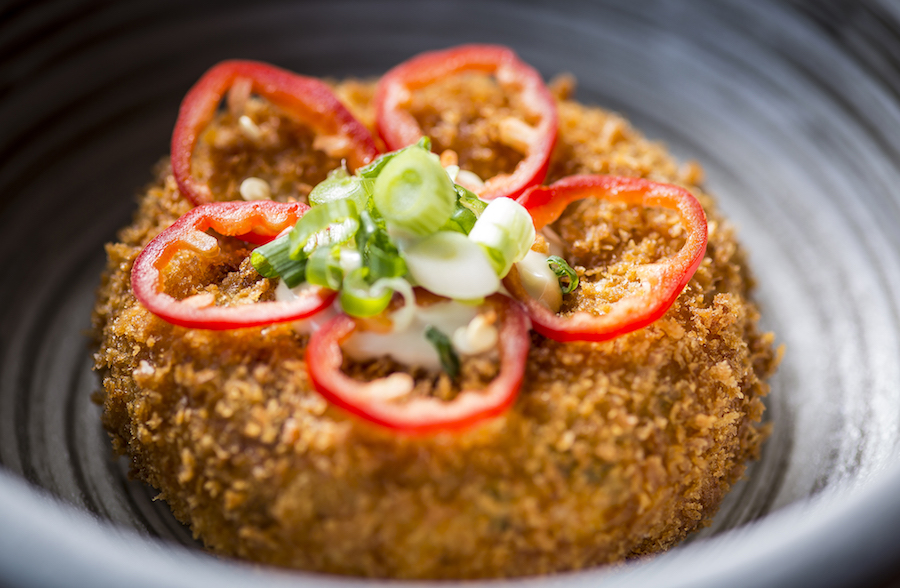If you’re a ramen fan in Chicago, odds are high that you’ve eaten at Furious Spoon. The ramen brand, founded by chef Shin Thompson, started with one tiny Wicker Park location back in 2015; in just three short years, that number has grown to seven, and Thompson has ambitions to expand to other cities. Some big changes are also coming to Furious Spoon in the next few weeks.
Thompson grew up in Japan, and ramen was his favorite food. But in Chicago, he found that it just wasn’t available, until in recent years. “To this day when I go back to Japan, me and my uncle always go check out the new ramen shops,” says Thompson. “It’s embedded in the culture in Japan — on any given block in Tokyo, there might be four ramen shops.”
Despite the popularity overseas, when Thompson first approached investors with the idea for a ramen joint in 2006, no one was interested.
So instead, he worked in fine dining and made a name for himself at Bonsoiree (which received a Michelin star while he was there) before moving on to open Kabocha in the West Loop in 2013. While Kabocha, sadly, didn’t last long, it’s where Thompson got a chance to feature his ramen, which the restaurant served on slow nights at the bar.
After Kabocha closed, Thompson dove headfirst into ramen. He went back to Japan, studied recipes, perfected various broths, and convinced his “ramen mentor” in Osaka to sell him an antique noodle machine. The original Furious Spoon blended hip-hop and ramen, a combination that took off with guests.
“In Japan, there’s a big hip-hop culture, an underground culture that is quite popular,” says Thompson. “But for it to be combined with ramen was a different thing. I’ve never seen that even in Japan.”
Upon opening, Furious Spoon was so popular it often had to close early because it ran out of food. That antique noodle machine could turn out only 200 orders a day, which Thompson thought would be more than enough — until Furious Spoon started receiving 300 or 400 orders on weeknights.
Other challenges popped up: How could he produce enough broth, since the pots weren’t big enough? How could he fit enough people through the tiny Wicker Park dining room? Over the following months, Thompson and his team ironed out issues while new ones arose as the group expanded. He had never worked at a multiple-location restaurant before, and he had to focus on making sure the ramen that customers got in Logan Square was identical to the ramen they got in Wicker Park.
Three years later, Furious Spoon is changing things up a bit. Counter service areas at most of its locations will become full-service areas. While the ramen will stay the same, customers can look forward to a new appetizer menu of Japanese treats. One dish will be a “crab bomb" — a take on a crab cake that’s shaped in a donut mold and fried for maximum crispiness. Another, harumaki, is a Japanese spring roll that will be made with a wheat wrap, filled with vegetables, and served with karashi, a spicy Japanese mustard.
Thompson wants to give guests more opportunities to ask questions, try new things, and relax over a few drinks. In addition, he can try out menu items that take longer to cook, as guests can wait at a table with a drink instead of simply standing at a counter, where they're more likely to wait for just a few minutes.
Watch for the new service style and menu to roll out across the chain over the next few weeks. While Thompson plans to take 2019 easy, his plan is to eventually open more Furious Spoons in other cities. They just have to be, well, chilly.
“Ramen does great in Chicago because it’s cold seemingly eight months of the year. I just don’t know if it would work as well in Miami.”



